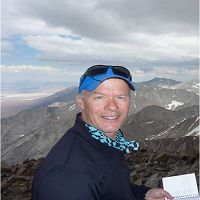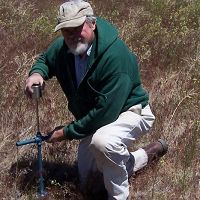Stacy et al., 2011
Mechanisms of soil organic matter stabilization in sediments eroded from small Sierra Nevada catchments.
Stacy, E., Hart, S.C., Hunsaker, C.T., Johnson,D., Berhe, A. (2011)
Fall meeting, American Geophysical Union, December 2011. Abstract B31G-0382.
-
Sierra, STAFF
-
Sierra, INVESTIGATOR
-
Sierra, INVESTIGATOR
-
Sierra, INVESTIGATOR
-
Sierra, INVESTIGATOR
Abstract
Lateral redistribution of soil and associated soil organic matter (SOM) by soil erosion imposes significant controls on SOM dynamics within the eroding watershed, and the overall carbon (C) sequestration potential of the terrestrial biosphere. For sediments exported from eroding watersheds, biochemical composition is a function of SOM in the eroding slope profiles, the type of erosion, duration of transport, and the intensity of decomposition that occurs during transport. Eroded SOM stability, including its molecular architecture and associations with soil minerals, influences complex decomposition dynamics involving microbial activity and abiotic factors during transit and after deposition. Sediment traps located at the point where the first-order stream leaves the watershed provide insight into the material removed by these nearly ephemeral streams before the sediment passes into a larger adjacent watershed. This study investigates the variability in amount and composition of SOM eroded from eight first-order watersheds in the mixed-conifer zone of the Sierra National Forest in the Kings River Experimental Watershed. These watersheds range in size from 48.7 to 650 ha, and have predominately western aspects and granitic bedrock. We are determining the interannual variation in the biochemical composition and stability of SOM of the annual sediment load, and how it relates to the composition of the upslope soil in the watershed. Previous work indicates that the dry weight of sediment transported by the streams may vary by more than two orders of magnitude between years and between watersheds (when normalized to kg/ha; Eagan et al. 2004). Our preliminary results show that the carbon to nitrogen (C:N) ratio of the sediment is less variable between years and watersheds, and is similar to the C:N ratio of surface soils from upslope positions. High concentrations of particulate organic matter in the sediment contribute to higher C concentrations in the sediments than in mineral soils in the source watersheds. In this presentation we will show how amount of C and N, and biochemical composition of SOM change during transport of the sediments, and as a function of climate and watershed size.
Citation
Stacy, E., Hart, S.C., Hunsaker, C.T., Johnson,D., Berhe, A. (2011): Mechanisms of soil organic matter stabilization in sediments eroded from small Sierra Nevada catchments . Fall meeting, American Geophysical Union, December 2011. Abstract B31G-0382..
Explore Further





